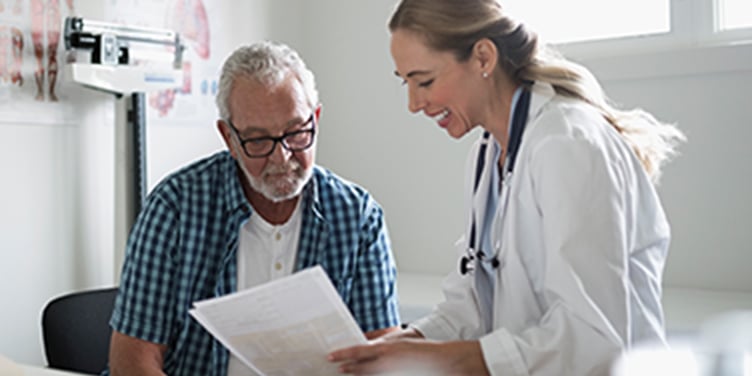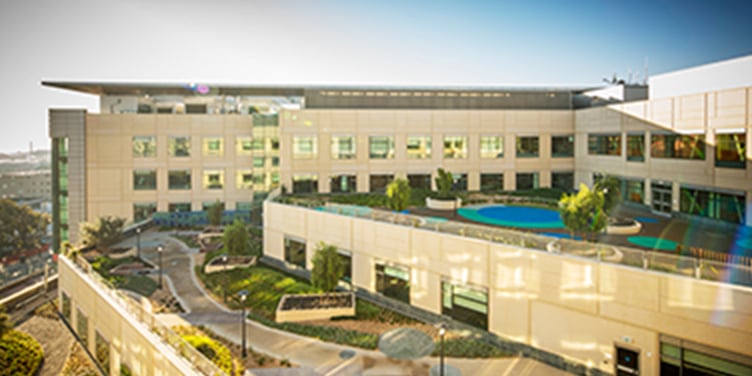Diarrhea

Overview
Diarrhea can be described as an abnormal increase in the frequency, volume or liquidity of your stools. The condition usually lasts a few hours to a couple of days. Diarrhea is typically associated with abdominal cramps. The most common causes of the condition are viruses, bacteria and parasites.
Our approach to diarrhea
Most cases of diarrhea go away on their own, and the only treatment needed is to drink enough fluids and replace lost electrolytes, such as sodium and potassium, to prevent dehydration. A doctor can help determine whether you need additional care, such as medications to treat an underlying bacterial or viral infection.
Awards & recognition
-

Among the top hospitals in the nation
-

One of the nation's best in gastroenterology & GI surgery
Signs & symptoms
Diarrhea can be described as an abnormal increase in the frequency, volume or liquidity of your stools. The condition usually lasts a few hours to a couple of days. Diarrhea is typically associated with abdominal cramps.
The most common causes of diarrhea include:
- Viruses
- Bacteria
- Parasites
Other causes include medications, such as antibiotics that disturb the natural balance of the bacteria in your intestines, artificial sweeteners and lactose, which is a sugar found in milk.
Diarrhea that persists for more than a couple of days is considered chronic and may be a sign of an underlying condition, such as inflammatory bowel disease or an infection. In these cases, diarrhea may lead to dehydration and requires the care of your doctor. Dehydration occurs when the body has lost too much fluid and electrolytes – the salts potassium and sodium. The fluid and electrolytes lost during diarrhea need to be replaced promptly because the body cannot function properly without them.
Signs and symptoms associated with diarrhea may include:
- Frequent loose, watery stools
- Abdominal cramps
- Abdominal pain
- Fever
- Bleeding
- Lightheadedness or dizziness from dehydration
Diarrhea caused by a viral infection, such as a stomach virus, or bacterial infection also may cause vomiting. In addition, blood and mucus in the stools may appear with diarrhea caused by bacterial infections.
Diagnosis
Your doctor will ask about your medical history, perform a physical examination and order routine blood, urine and stool tests. Other diagnostic tests used to make a diagnosis of constipation include sigmoidoscopy and colonoscopy.
Sigmoidoscopy
For a sigmoidoscopy, the doctor uses a special instrument called a colonoscope, which is a long, flexible tube that is about as thick as your index finger and has a tiny video camera and light on the end, to exam your rectum and lower part of your colon. During the procedure, everything will be done to help you be as comfortable as possible. Your blood pressure, pulse and the oxygen level in your blood will be carefully monitored.
Your doctor will do a rectal exam with a gloved, lubricated finger; then the lubricated colonoscope will be gently inserted. As the scope is slowly and carefully passed, you may feel as if you need to move your bowels, and because air is introduced to help advance the scope, you may feel some cramping or fullness. Generally, however, there is little or no discomfort. Occasionally, some abdominal pressure, which may be provided by your nurse, or a change in position may be needed to avoid looping of the colonoscope within the abdomen. Your doctor will advance the scope until he or she has examined the left side of the colon. Afterwards, the scope is then carefully withdrawn while a thorough exam of the colon is performed. At this point in the exam, your doctor will use the colonoscope to look closely for any polyps or other problems that may require evaluation, diagnosis or treatment. The procedure typically takes between 10 and 15 minutes.
Colonoscopy
Colonoscopy is used to evaluate symptoms such as abdominal pain, bloody bowel movements, altered bowel habits such as constipation or diarrhea, and weight loss. This test is similar to sigmoidoscopy, but the doctor looks at the entire colon, rather than just the left side. The term "colonoscopy" means looking inside the colon. Colonoscopy is a procedure performed by a gastroenterologist, a well-trained specialized doctor.
Colonoscopy also is performed using a colonoscope, which is a long, flexible tube that is about as thick as your index finger and has a tiny video camera and light on the end, to exam your rectum and lower part of your colon. During the procedure, everything will be done to help you be as comfortable as possible. Your blood pressure, pulse and the oxygen level in your blood will be carefully monitored.
By adjusting the various controls on the colonoscope, the gastroenterologist can safely maneuver the instrument to carefully examine the inside lining of the colon from the anus to the cecum. The colonoscope contains a channel that allows instruments to be passed in order to take tissue or stool samples, remove polyps and provide other therapy. The high quality picture from the colonoscope, shown on a TV monitor, provides a clear, detailed view of the colon. It provides a more precise examination than X-ray studies.
Your doctor will do a rectal exam with a gloved, lubricated finger; then the lubricated colonoscope will be gently inserted. As the scope is slowly and carefully passed, you may feel as if you need to move your bowels, and because air is introduced to help advance the scope, you may feel some cramping or fullness. Generally, however, there is little or no discomfort. Occasionally, some abdominal pressure, which may be provided by your nurse, or a change in position may be needed to avoid looping of the colonoscope within the abdomen. Your doctor will advance the scope until he or she reaches the beginning of the colon, called the cecum. After reaching this point, the scope is then carefully withdrawn while a thorough exam of the colon is performed. At this point in the exam, your doctor will use the colonoscope to look closely for any polyps or other problems that may require evaluation, diagnosis or treatment. The procedure typically takes between 10 and 15 minutes.
Treatments
In most cases, diarrhea resolves itself after two or three days, and almost always within one to two weeks. Usually, the only treatment necessary is preventing dehydration, which can be done by drinking replacement fluids and an electrolyte mixture. Adequate levels of minerals such as sodium, magnesium, calcium and especially potassium are essential in maintaining the electrical pacing of your heartbeat. Disruption of your body's levels of fluids and minerals creates a serious electrolyte imbalance.
Medicines that stop diarrhea should not be used for people whose diarrhea is caused by bacterial infection or a parasite because they may prolong the infection. In these cases, antibiotics are typically recommended. Depending on the severity and type of virus, viral caused diarrhea is either treated with medication or left to run its course.
UCSF Health medical specialists have reviewed this information. It is for educational purposes only and is not intended to replace the advice of your doctor or other health care provider. We encourage you to discuss any questions or concerns you may have with your provider.










